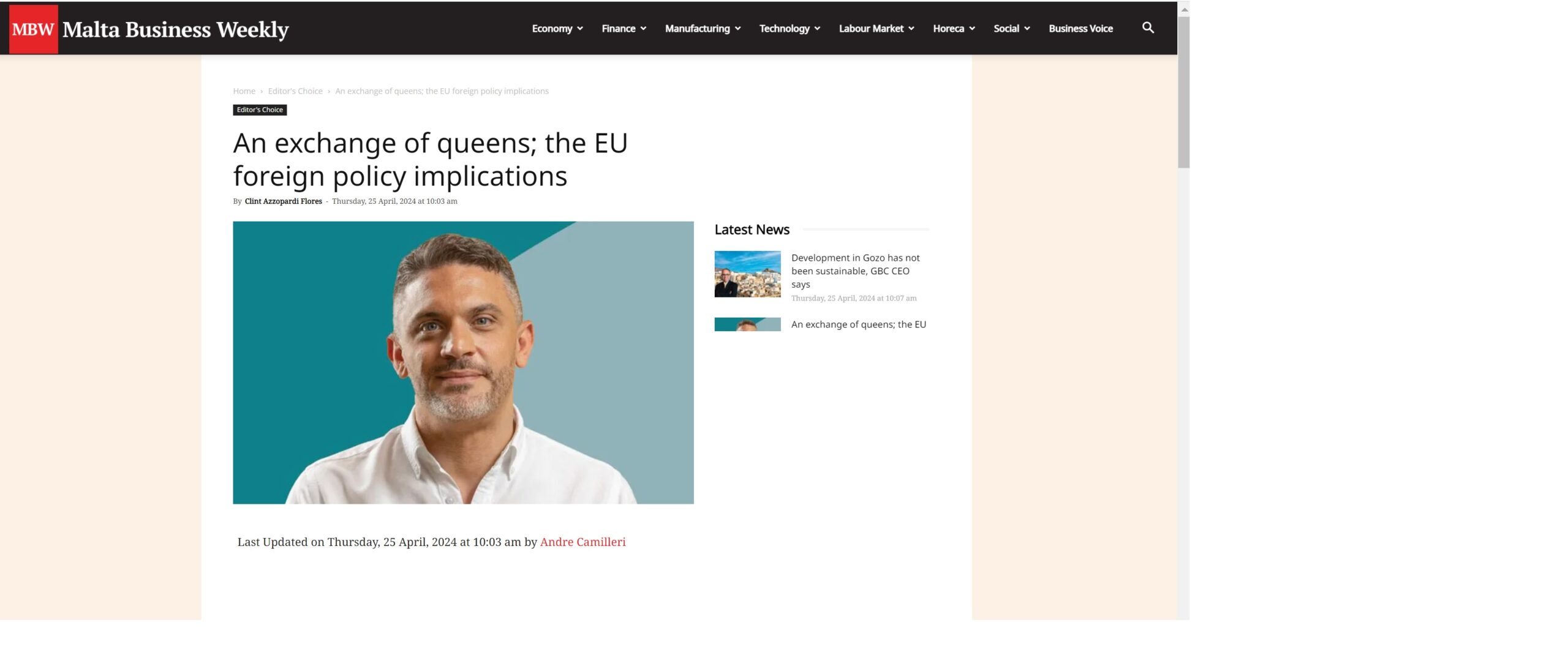When the mobilisation of the Russian troops along the Eastern Ukrainian borders, commenced, I was about to return to Malta from Brussels. Two close but unrelated friends were encouraging me to open a page on social media to inform the public, as I was uploading pieces of information in the run-up of the escalation that turned into a devastating war.
Frankly, I was quite uninterested about the idea, but the encouragement was far greater than my scepticism. In response, I opened a page and started uploading additional information by blending economic theory and geopolitics when evaluating the decisions taken from the Berlaymont and Europa buildings. Back then, the situation was quite complex and the stepwise approach towards the imposition of sanctions on the Russian economy, to mainly deter President Putin from advancing and eventually retreat, exacerbated the situation.
When the invasion began, I kept a diplomatic discourse in my assessment and appealed to avoid any hasty decisions. Understandably, the public and the media exerted pressure on politicians to act and act fast. In the end, Brussels succumbed to the public and political pressure. Still, when it comes to international politics, especially when dealing with countries like Russia and hostile leaders, with many players in the game, the biggest mistake is to rush before considering the next moves of your opponent. This is the basic game theory chapter in microeconomics.
Certainly, the Russian invasion of Ukraine was not limited to European soil and delivered global economic and financial shockwaves. However, some of the repercussions are self-inflicted and mainly relate to the policies that the West championed through the USA with the EU mollycoddled to join the chorus. My scepticism towards the unprecedented imposition of sanctions relates to the interconnectedness of the Russian trade to the rest of the Western economies, especially the EU. The signs of a boomerang economic effect were clear from the outset. Russia is neither Iran nor North Korea and its interconnectedness to the global trade wrought havoc to many Western economies and expanded a global contagion inflationary spread.
The economic uncertainty left most of the economic operators without a choice but to wait for the biweekly announcement of any ensuing package of sanctions. Indeed, this process stalled the trade and importation of many commodities from Russia, even though some of the said commodities were not sanctioned. Nevertheless, the interconnection of Russian companies needed strict due diligence to fully comply with sanctions. Unquestionably, the Russian economy will be hurt in the long run and the High Representative Josep Borrell is calling for “Strategic Patience” until this occurs.
However, borrowing Keynes aphorism in response to the Classicals, “In the long run we are all dead” unless we shorten the time dimension of this “Strategic Patience”. Wheat and other basic commodities are still stuck in Ukrainian depots, with the first shipment from the port of Odessa leaving this week to supply corn and wheat. Nevertheless, the lack of supply of basic commodities, compounded with the spike in energy prices is fuelling inflation. In response, the Federal Reserve scurried to increase the interest rates to curb inflation expectations while the European Central Bank took its time and slightly revised its interest rates. As a result, the hawkish increase in interest rates by the Federal Reserve, strengthened the US dollar in the exchange rate market.
Surely, a stronger USD directly affects the main trading partners of the USA and adds additional inflationary pressures. However, the problem is the way goods and services are priced among those who have no association with the USA. For instance, the IMF issued a paper analysing almost 40% of the invoices from a large number of countries with no direct link to the USA. It transpired that for food and fuel the USD is used as a reference currency when quoting on invoices. It also became apparent that this is not just an accounting exercise and the situation is far more complex for businesses when they do trade. Apparently, the strength of the USD is creating global inflationary pressures even for countries that hardly trade with the USA.
This reminded me of the first chapters of the economic textbooks and the brief history of the economic woes of currency wars. The global inflationary pressures that are fuelled inter alia by the war in Ukraine, and the policies adopted by the central banks to fight inflation, are in effect producing a reverse currency war. Indeed, reverse currency wars are not as common. However, the sharp appreciation of the USD is creating new challenges to currencies and central banks around the globe.
Certainly, the West is buying into the Russian narrative that this is all the doing of sanctions imposed on Russia. In fact, Russia’s topmost diplomat, Sergey Lavrov is strongly lobbying to avoid using the USD as a global reference and purchasing currency. The reasons cited might be slightly distant but somehow related to the fact that Russia’s dollar and euro reserves were frozen and seized by the G7 Group in response to the Russian invasion of Ukraine.
Currently, the narrative sold by Russia to its trading partners is to not use the USD and diversify to other currencies when purchasing basic commodities like oil and gas. In a recent speech Sergey Lavrov explained that those countries which differ from the Western model of democracy are risking their reserves – dominated in either the Euro or USD – if they do not conform to their ideologies. And if the situation of inflationary pressure persists, we will see the beginning of another negative economic spillover effect if currencies are also drawn into this geopolitical game.



